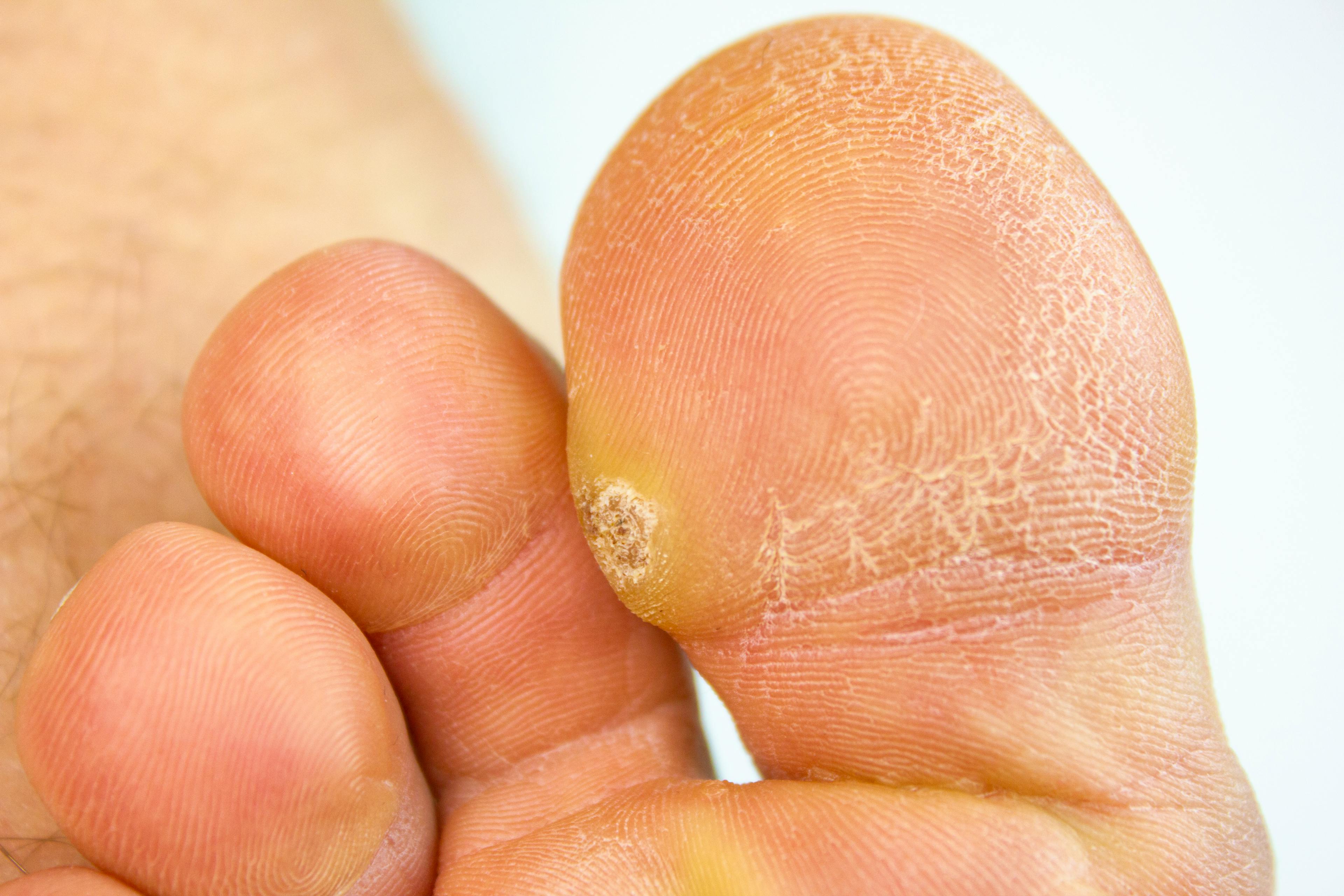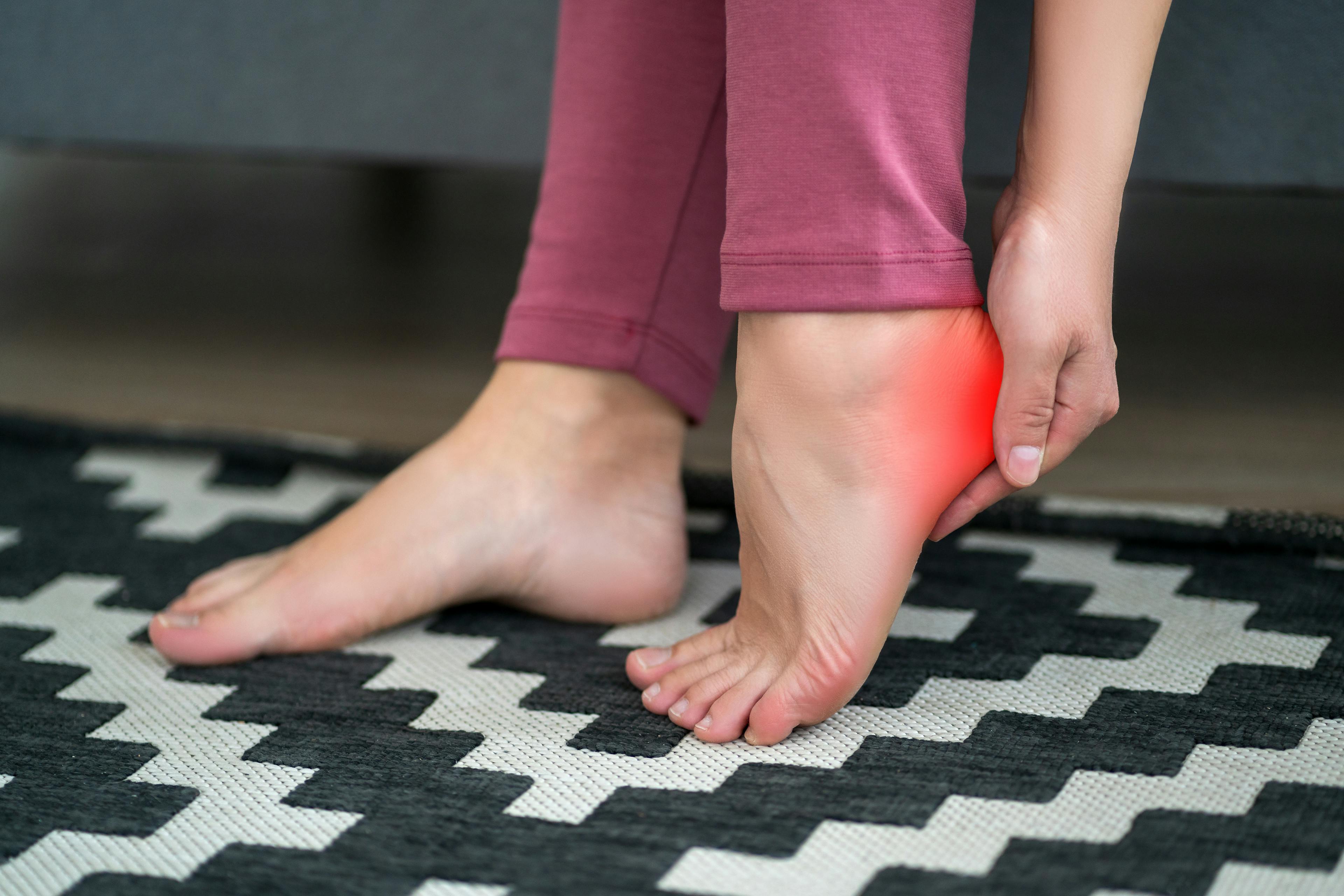Key Takeaways
Plantar warts are caused by the human papillomavirus (HPV) and often appear on the soles of the feet, leading to pain or discomfort when walking or standing.
Treatments range from topical medications and cryotherapy to laser therapy or minor procedures, depending on the wart’s size, location, and response to care.
Wearing protective footwear in public spaces and keeping feet clean and dry helps reduce your risk of developing plantar warts or spreading them to others.
Plantar warts are small, non-cancerous growths that appear on the soles of the feet. Caused by a strain of the human papillomavirus (HPV), these lesions can be painful and persistent. While often harmless, plantar warts can cause discomfort while walking or standing and may require medical treatment if symptoms worsen or spread.
At CLS Health, our podiatry specialists are here to help you understand, treat, and prevent plantar warts with evidence-based care and personalized treatment options.
What Are Plantar Warts?
Plantar warts develop when HPV enters the skin through small cuts, cracks, or pressure points—usually on the heels or balls of the feet. The virus thrives in warm, moist environments and is commonly contracted in public places such as locker rooms, pool decks, or shared showers.
Plantar warts often grow inward due to the pressure from walking, which can make them more difficult to spot and more painful to manage over time.
What Causes Plantar Warts
You may be more likely to develop plantar warts if you:
- Walk barefoot in public or damp areas (such as gyms or poolside)
- Have cuts, scrapes, or calluses on the feet
- Share socks, shoes, or towels with others
- Have a weakened immune system
- A child or adolescent, due to more frequent skin exposure and contact in communal environments
Symptoms of Plantar Warts
Plantar warts can vary in appearance and discomfort. Common signs include:
- A small, rough growth with a fleshy or grainy surface
- Tiny black dots (“wart seeds”) inside the lesion, caused by clotted blood vessels
- Pain or tenderness when walking or standing
- A callused layer of skin over the wart due to pressure
- Discomfort in one specific area of the sole
Warts may appear alone or in clusters, known as mosaic warts.
Diagnosis and Evaluation
A podiatrist can usually diagnose plantar warts during a routine foot exam. Diagnosis may involve:
- Visual Inspection: Identifying hallmark features such as black dots, callused skin, or pressure sensitivity.
- Dermoscopy: In some cases, magnification may be used to better assess the wart and rule out other conditions like corns or calluses.
Plantar Wart Treatments
Many plantar warts resolve on their own over time, but persistent or painful warts may require treatment. Options include:
Topical Medications
Salicylic acid: Helps dissolve wart tissue when applied regularly over several weeks.
Cryotherapy
Liquid nitrogen freezing: Used in-office to destroy the wart by freezing its tissue.
Electrosurgery
Electrodesiccation and curettage: Burns and scrapes the wart away under local anesthesia.
Laser Therapy
Pulsed dye laser: Destroys the wart's blood supply, leading to gradual shrinkage.
Immunotherapy
Topical agents: Stimulate the body’s immune system to fight off the virus.
Surgical Removal
Excision: Reserved for resistant cases where other treatments have failed.
Your podiatrist will determine the most appropriate approach based on the size, depth, location, and severity of the wart.
Prevention Tips
You can reduce your risk of developing plantar warts by:
- Wearing shoes or sandals in public showers, locker rooms, and pool areas
- Keeping feet clean and dry, especially between the toes
- Changing socks and shoes daily
- Avoiding the sharing of socks, shoes, or nail clippers
- Not picking at existing warts, which can spread the virus to other areas
Managing Plantar Warts
With the right care and consistency, plantar warts can be effectively treated over time. Healing may take a few weeks or months, but many people find relief with a steady approach. Keep an eye on your feet for any new spots, especially if you’ve had warts before.
If you're noticing discomfort, changes, or slow progress with home care, a visit to a podiatrist can help you take the next step toward clearer, healthier skin.
Get Expert Care for Plantar Wart Removal at CLS Health
Podiatrists at CLS Health offer personalized care for patients dealing with plantar warts and other common foot conditions. We provide treatment options that are safe, effective, and designed to restore your comfort and mobility.



